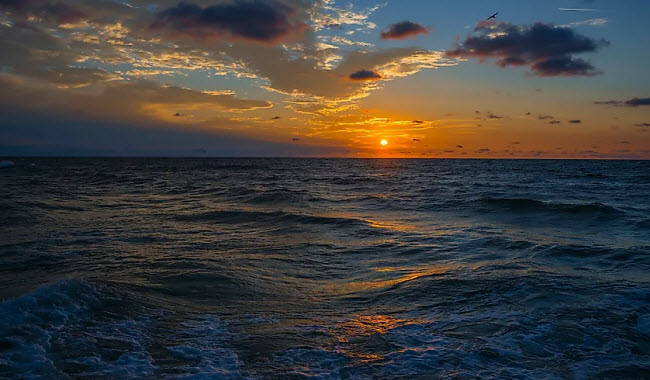The Black Sea is an inland sea located between southeastern Europe and the Anatolian Peninsula (Turkey). Covering an area of 422,000 square kilometers, its size increases to 461,000 square kilometers when including the Sea of Azov. This body of water connects to the Atlantic Ocean via a complex route, passing through the Mediterranean Sea, the Aegean Sea, and various straits. The Bosporus Strait links it to the Sea of Marmara, while the Dardanelles Strait connects it to the Aegean. The Kerch Strait, on the other hand, links it to the smaller Sea of Azov. The Black Sea serves as a natural border, separating Eastern Europe from Western Asia. Several rivers, most notably the Danube, flow into it, and it is bordered by numerous countries, including Turkey to the south, Bulgaria and Romania to the west, Ukraine and the Crimean Peninsula to the north, Russia to the northeast, and Georgia to the east.
Due to its unique features, the Black Sea is highly regarded by marine scientists. The deeper layers of the sea are nearly biologically dead due to poor ventilation, making its ecosystem highly sensitive to external influences, both natural (such as environmental changes) and human-made (like fishing activities and pollution).
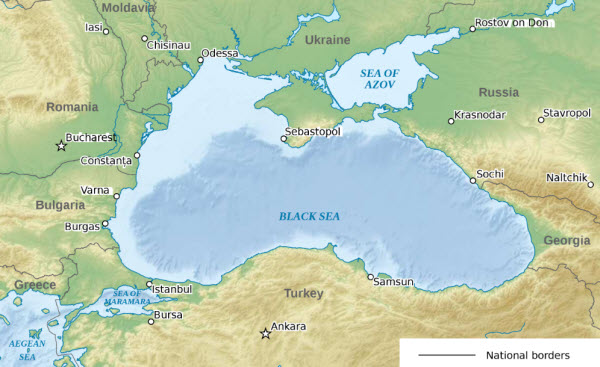
Origin of the Name
There are several theories regarding the origin of the name “Black Sea.” Some estimates suggest the name dates back to the 13th century, while other theories propose an even older origin. In ancient times, the sea was known as the “inhospitable sea” due to its harsh navigation conditions and the hostile tribes that lived along its shores. With the Greek colonization, its name changed to the “hospitable sea.” One of the theories about its current name suggests that colors were once used to denote compass directions, with black representing north and red representing south. The historian Herodotus is known to have used the terms “Red Sea” and “Southern Sea” interchangeably, implying that the Black Sea could be named for its northern position. Another theory points to the dark color of its deep waters, which, due to the high concentration of algae, give the sea a darker appearance compared to the Mediterranean. The marine sciences community, however, links the name to the presence of a hydrogen sulfide layer beneath 200 meters, which creates black deposits due to unique microbial activity.
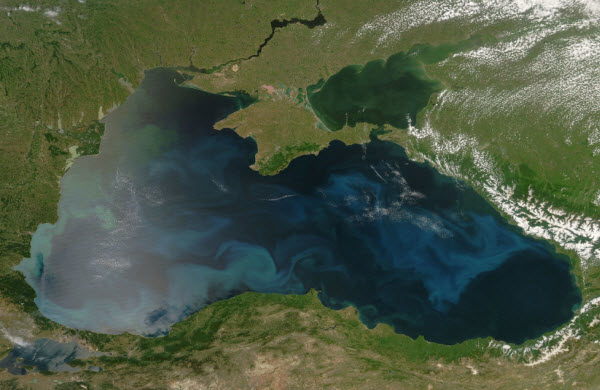
Geography and Geology
The northern and northwestern coasts of the Black Sea are characterized by valleys, plains, and rivers, while the eastern shore is bordered by the Caucasus mountain ranges. In the south, near the Bosporus outlet, the Pontic Mountains line the coast. The terrain along the shore is generally mild, although some areas are steep. On the northwestern side, the Danube Delta flows into the sea, forming vast wetlands. Geologically, the Black Sea was formed during the Miocene epoch, when tectonic shifts separated the ancient Tethys Ocean into smaller basins, such as the Sarmatian, Caspian, Azov, and Black Seas. The Black Sea itself is divided into two sub-basins, with the northwestern basin featuring a relatively wide shelf of up to 190 kilometers. In contrast, the southern shelf near Turkey and the eastern shelf near Georgia are much narrower. The sea reaches its maximum depth of 2,206 meters south of Yalta in the Crimean Peninsula.
Unique Marine Conditions
One of the most remarkable features of the Black Sea is that its deep waters do not mix with the upper layers, which are oxygenated by the atmosphere. As a result, over 90% of the sea’s volume consists of anoxic (oxygen-depleted) waters. The upper layers are cooler, less saline, and denser due to the large influx of freshwater from rivers, while the deeper waters are warmer and saltier, flowing in from the Mediterranean Sea via the Sea of Marmara. The average salinity of the surface water is between 18 and 18.5 parts per thousand, making it less salty than most seas. The temperature of the surface waters varies seasonally, ranging from 8°C to 30°C. Beneath the surface, there is a middle layer of cooler, saltier water resulting from wintertime cooling and reduced river inputs. This layer has a salinity of 22-22.5 parts per thousand and maintains temperatures of about 8.5°C.
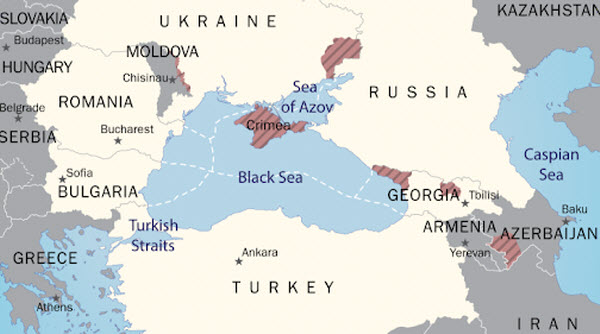
Ecological and Economic Importance
The Black Sea plays a crucial role in the region’s economy, as its ice-free waters serve as a vital shipping route linking Eastern European countries to global markets. The Danube River, which flows into the Black Sea, is a major trade artery for the Balkan nations. In the years following the Cold War, the Black Sea has also gained popularity as a tourist destination, with its resorts becoming a growing industry. The warm springs in areas like the Crimean Peninsula attract many for their therapeutic properties, and the sea remains a key source of livelihood for local fishermen.
Despite its ecological importance, the Black Sea faces several environmental threats, primarily due to pollution, overfishing, and industrial waste disposal. These threats have led to significant biodiversity loss, prompting efforts from surrounding nations to implement conservation measures. In the 1990s, the six countries bordering the Black Sea signed the “Convention on the Protection of the Black Sea” to tackle pollution and safeguard its ecosystem.
Historical Significance
The Black Sea has historically served as a major waterway connecting the Balkans to the Eurasian plains, the Caucasus, Central Asia, Asia Minor, and Mesopotamia. It was known to be sailed by the ancient Phoenicians, and the Greek historian Herodotus described its northern shores as early as the 5th century BC. By the 4th century BC, Slavs and Turks had settled along its coasts, and by the 15th century, the Turks controlled much of its coastline. In the modern era, the Black Sea was the site of significant naval battles during both World Wars.
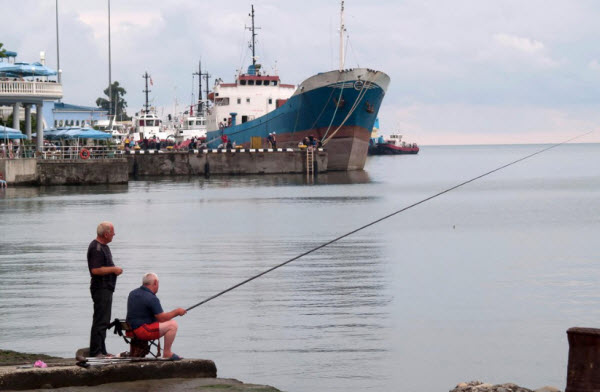
Environmental Threats and Conservation Efforts
The Black Sea faces numerous environmental challenges, including pollution from industrial waste and runoff from agriculture. Overfishing has also caused a decline in marine biodiversity. To combat these issues, the Soviet Union implemented restrictions on dolphin hunting, and international efforts have been made to regulate oil tankers and industrial waste disposal. In the 1990s, the surrounding countries signed the “Black Sea Conservation Agreement,” a comprehensive treaty aimed at protecting the sea’s ecosystem and biodiversity.
